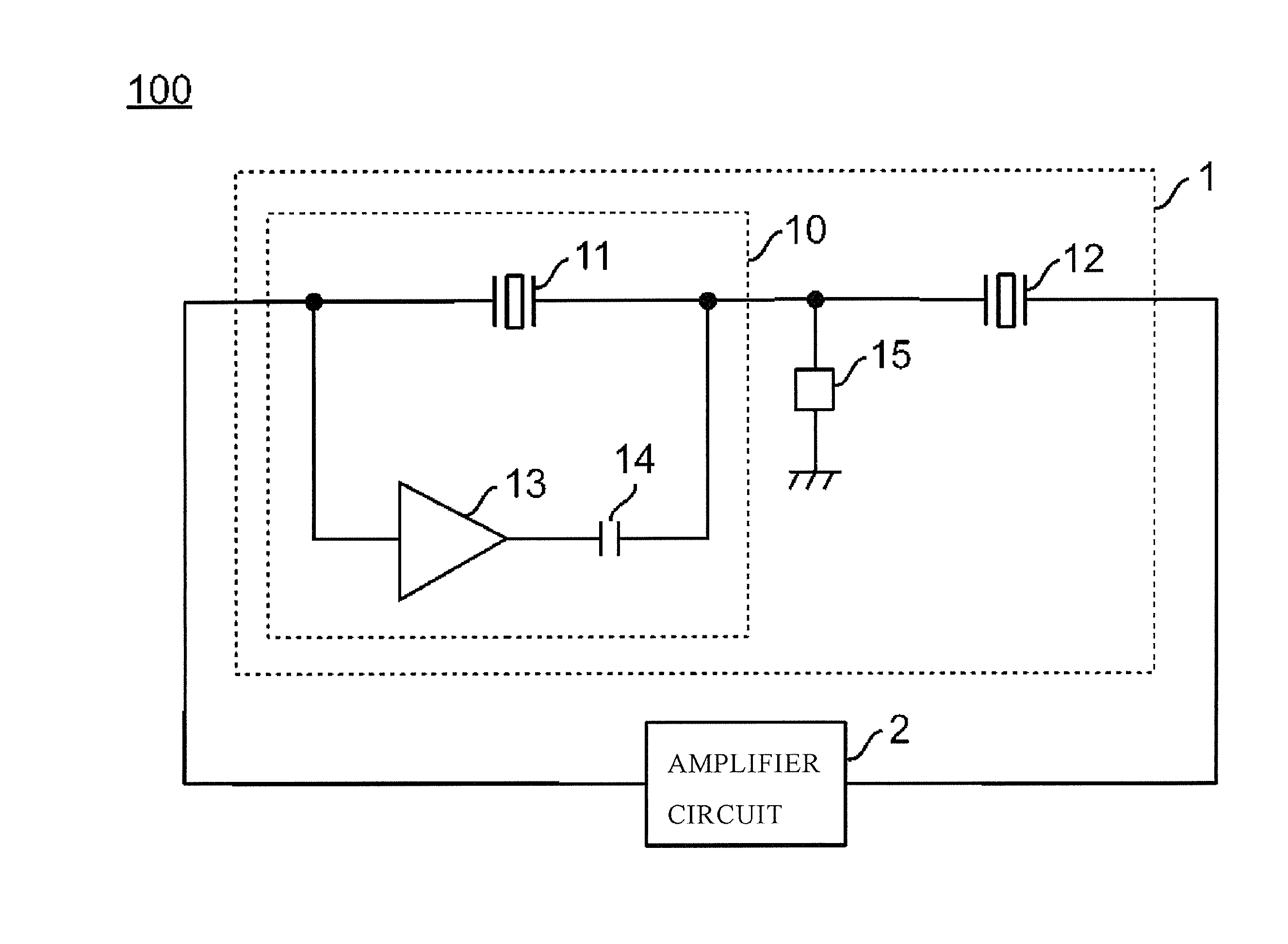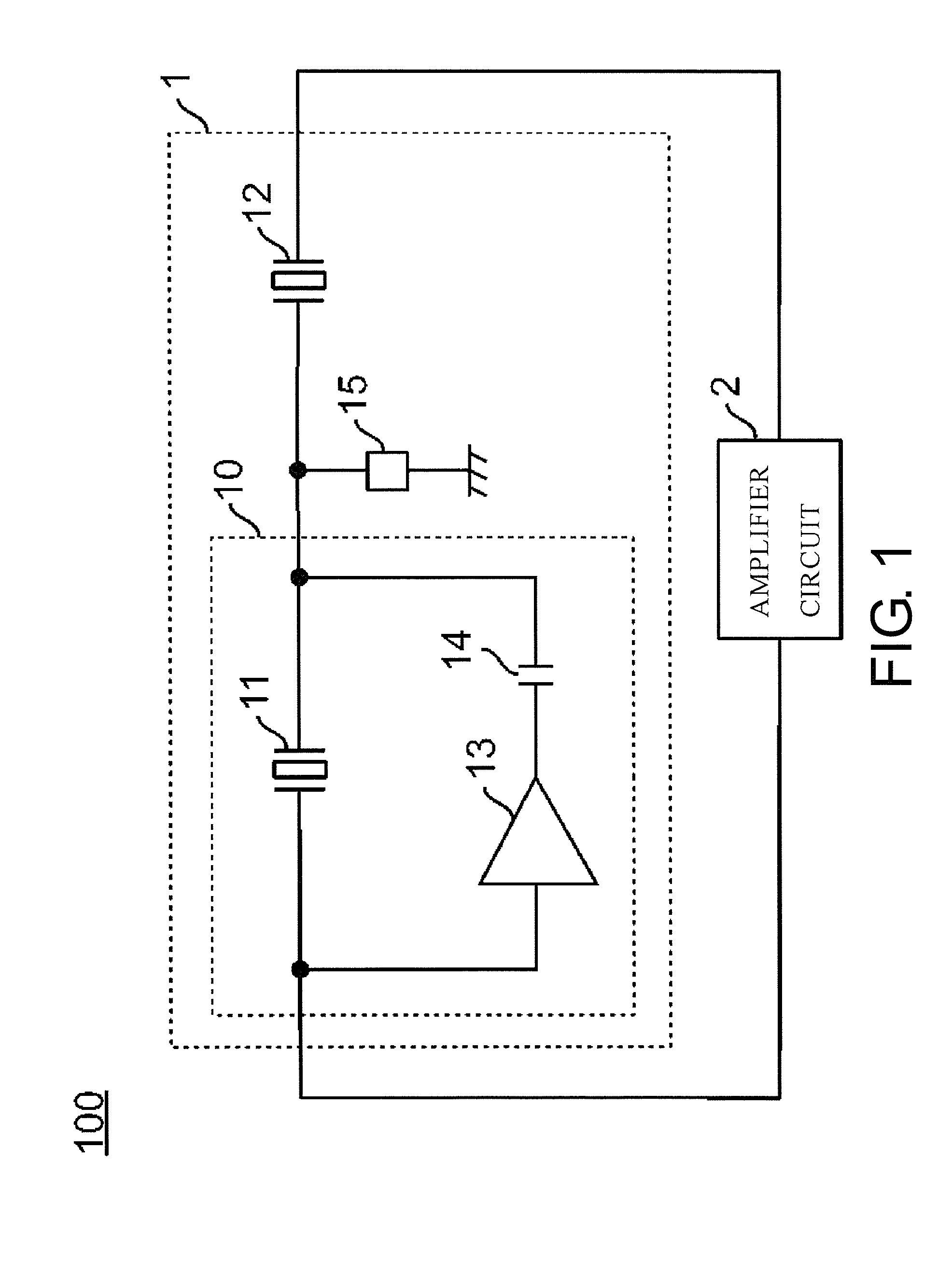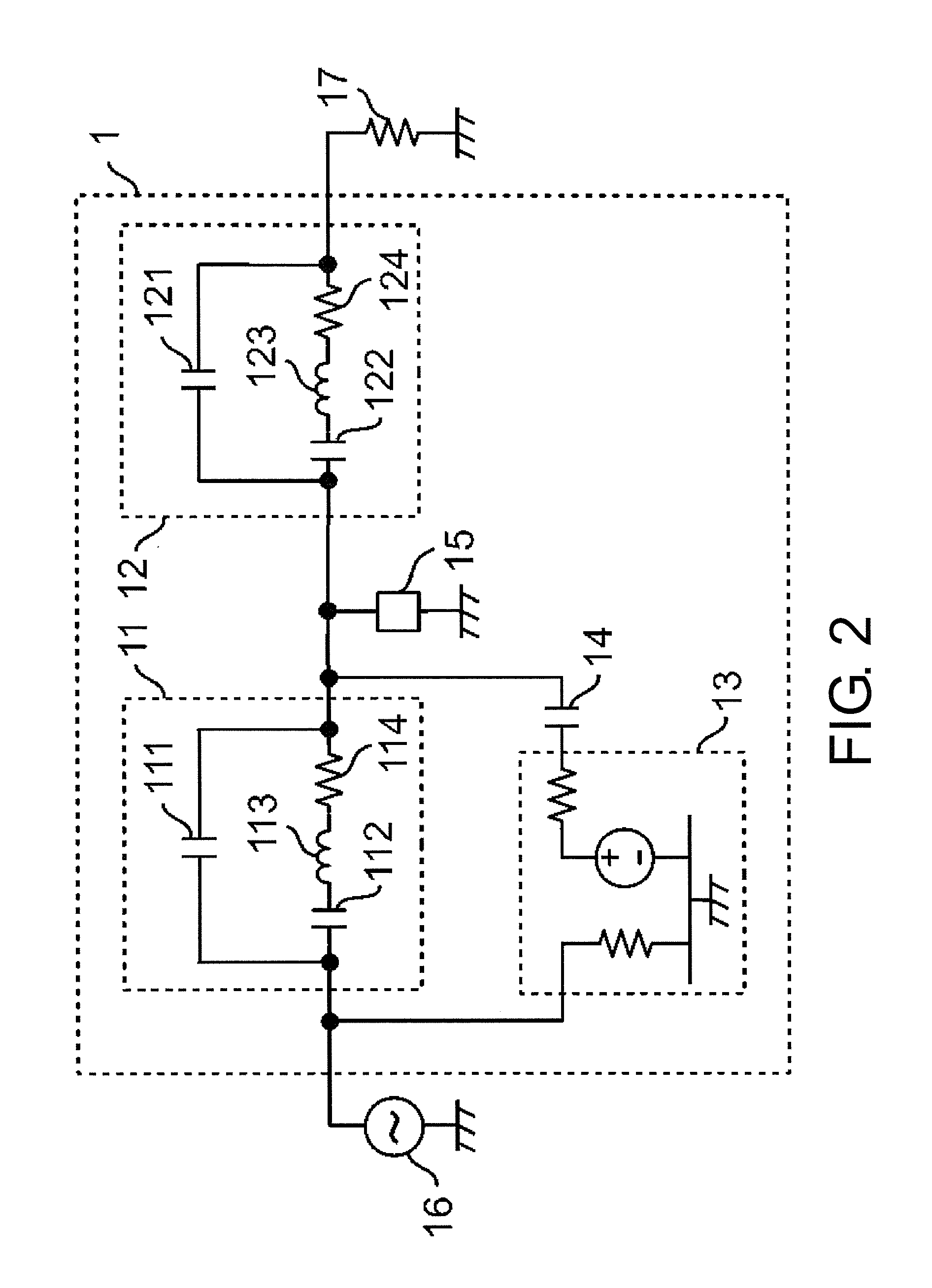Negative capacitance circuit, resonance circuit and oscillator circuit
a negative capacitance circuit and resonance circuit technology, applied in the direction of oscillator generators, network simulating negative resistances, electrical apparatus, etc., can solve the problems of insufficient inductance value adjustment, inability to cancel temperature change to obtain stable oscillation frequency, disadvantageous inductance value significant change,
- Summary
- Abstract
- Description
- Claims
- Application Information
AI Technical Summary
Benefits of technology
Problems solved by technology
Method used
Image
Examples
first embodiment
Effect of First Embodiment
[0055]As described above, the resonance circuit 1 according to the first embodiment includes the first resonator 11, the second resonator 12, the inverting amplifier 13, the capacitance element 14, and the negative capacitance circuit 15. The second resonator 12 is connected to the resonance circuit 1 in series. The inverting amplifier 13 and the capacitance element 14 are connected to the first resonator 11 in parallel, and are connected each other in series. The negative capacitance circuit 15 is disposed between the node between the first resonator 11 and the second resonator 12, and ground. Accordingly, a resonance frequency can be set between the resonance frequency fr1 of the first resonator 11 and the resonance frequency fr2 of the second resonator 12.
Connecting Variable Resistors to Resonators in Parallel of Second Embodiment
[0056]FIG. 4 illustrates an exemplary configuration of a resonance circuit 1 according to a second embodiment. The resonance c...
second embodiment
Effect of Second Embodiment
[0061]As described above, the resonance circuit 1 according to the second embodiment further includes the first variable resistor 18 and second variable resistor 19. Accordingly, the resonance circuit 1 can adjust the resonance frequency of the resonance circuit 1 between the resonance frequency of the first resonator 11 and the resonance frequency of the second resonator 12. Namely, the resonance circuit 1 according to the second embodiment can change the peak frequency in the frequency characteristic of the resonance circuit 1 illustrated by the solid line in FIG. 3A between the resonance frequency fr1 of the first resonator 11 and the resonance frequency fr2 of the second resonator 12 in response to the resistance values of the first variable resistor 18 and second variable resistor 19.
Third embodiment
Variable Capacitance Element Between the First Resonator 11 and the Second Resonator 12
[0062]FIG. 5 illustrates an exemplary configuration of the resonanc...
third embodiment
Effect of Third Embodiment
[0066]As described above, the resonance circuit 1 according to the third embodiment further includes the variable capacitance element 20. Accordingly, the resonance frequency of the resonance circuit 1 can vary more freely.
PUM
 Login to View More
Login to View More Abstract
Description
Claims
Application Information
 Login to View More
Login to View More - R&D
- Intellectual Property
- Life Sciences
- Materials
- Tech Scout
- Unparalleled Data Quality
- Higher Quality Content
- 60% Fewer Hallucinations
Browse by: Latest US Patents, China's latest patents, Technical Efficacy Thesaurus, Application Domain, Technology Topic, Popular Technical Reports.
© 2025 PatSnap. All rights reserved.Legal|Privacy policy|Modern Slavery Act Transparency Statement|Sitemap|About US| Contact US: help@patsnap.com



